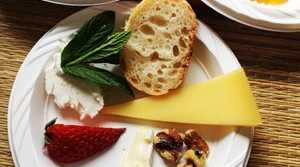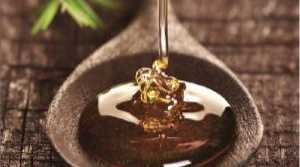5 Questions with Marina Marchese, Founder of the American Honey Tasting Society
Marina Marchese is a beekeeper, author and honey sommelier. She is the president of Red Bee Honey and the founder of the American Honey Tasting Society. Its mission is to protect the quality and character of honey as a noble food and educate the public about the importance of nectar and pollen-baring plants for diversity of bee forage through her signature Honey Tasting Laboratory Workshops. We asked her a few questions about honey-tasting...
1. What is it that makes honeys from different regions taste different? Can you give me some examples?
Honey is a natural resource and product of agriculture ; made from the nectar of the flowers. Each and every honey harvest is unique in color, aroma and flavor profile dependent upon the type of nectar gathered by the honeybee. Factor in the unpredictable combination of environmental elements of terroir: geographic region, climate and soil and you have a honey with a complex composition and singularly individual personality. As in winemaking, terroir dramatically affects the flavor profiles of the honeys produced. It is possible to taste the difference between an orange blossom honey from the groves in Florida vs. orange blossom from the deserts of Arizona or that a fireweed, sourwood or linden honey can only be produced in the specific region where these honey plants grow.

2. What are the flavor profiles of a few of your favorite honeys?
I appreciate every drop of pure honey because I understand how labor intensive it is for the bees to make but more inconceivable, it is increasingly difficult to find honey that is unadulterated. Much of what we see in the stores is a commercially processed, flavorless, overly sweet liquid. Honey straight from the beehive has layers and depths of flavor. So when I taste a new honey I am looking for flavors like fruitiness, flowers, earthiness, wood, spice also astringency, pungency and occasionally saltiness. I immediately want to know more about the floral source, the region it was produced and the seasonality to put together a detailed tasting profile.

The best tasting honeys are produced in limited quantities by small apiaries. Honey should be simply drizzled on your favorite cheese and bread or enjoyed straight off the spoon. My personal decadent pleasure is a generous piece of freshly sliced honeycomb over Robiola due Latti, warm crusty Italian bread and washed down with a glass of Prosecco. There’s never a wrong way to eat honey…
3. If I want to get started in honey tasting, are there any resources that you recommend?
The best way to start tasting and learning about tasting honey is to gather some samples from reliable sources such as your local beekeeper or farmers market and taste them side by side. You will be astonished in the variety colors, aromas and flavor profiles. Take notes so you’ll remember what you tasted and which you enjoyed. My second book, The Honey Connoisseur: Selecting, Tasting, and Pairing Honey, With a Guide to More Than 30 Varietals has been described as the definitive guide to the American honey. You’ll find a useful Honey Aroma and Flavor chart.
4. Are there honey-tasting events where I can try different honeys? How do I find them?
The world is experiencing that Bees and Honey are the latest food trend and now that they are disappearing the general public is paying attention to the fact that these buzzing insects matter to the production of fruits, vegetables, nuts, seeds, spices, herbs and oils. I’ve never met a beekeeper that was not eager to let you taste their honey, just need to ask. Many are hosting honey tasting at farmers markets, local farm-to-table restaurants, vineyard and breweries.

There are also honey festivals popping up in many cities throughout the country especially around the harvest in September, which also happens to be National Honey Month. A quick internet search should lead you to plenty of liquid gold.
5. Are there apiaries that will let me come visit? How do I find them?
The good news is beekeeping has become a favorite activity for food lovers, homesteaders and chefs across the US. Most beekeepers are hobbyists with a few hives that tend to bees at their private residences so you would need to have an invitation before visiting. Look for beekeepers at your local farmers market, I have no doubt that they would be delighted to let you visit their apiary, taste some honey and make a purchase. There are some larger honey farms around the country open to the public. If you find yourself in Connecticut, we welcome visitors at R ed Bee Apiary by appointment for a talk, tour and tasting during the summer at one of out Honey Tasting Laboratory Workshops. See the Red Bee website for details.

